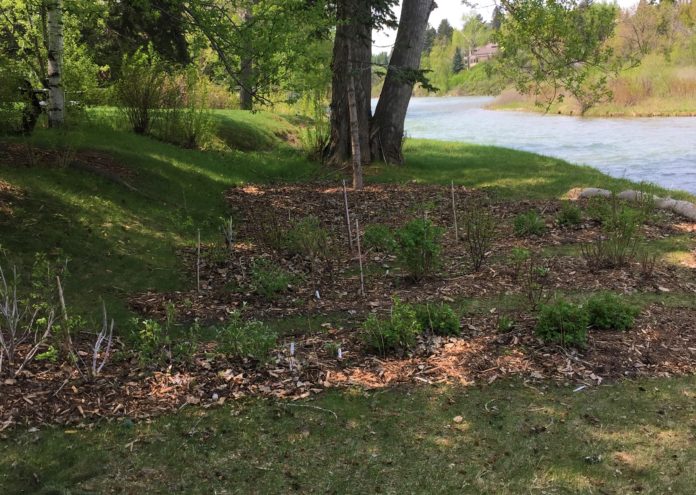About Calgary River Valleys
Calgary River Valleys (CRV) is an independent, not-for-profit organization led by volunteers dedicated to building a strong and effective voice for river valley protection and water quality in Calgary. We consider ourselves “the voice of our rivers.” Last year CRV partnered with a river-adjacent homeowner to restore a section of the Elbow River riparian (river-adjacent) area as Phase 1 of our Riverbank Makeover Project. This year, Phase 2 involves monitoring the success of the 2018 restored site, as well as restoring another riparian area along the Elbow River. This project is made possible with funding from City of Calgary Water Resources. Our goal is to work directly with homeowners and work toward stabilizing their riverbank by planting native plant species along the shore, and to educate the general public about riverbank function and why a healthy riparian zone is important.
Did You Know?
- The riparian zone is the transition zone between the river, creek, or wetland and the surrounding lands. In this zone the soil and vegetation are both strongly influenced by water.
- It makes a difference what types of plants are in the riparian zone to ensure it is healthy and functions as it should. Mother Nature would design a riparian zone with multiple riparian vegetation species that regenerate themselves and grow to different heights, all with deep roots that do an excellent job of absorbing water, filtering sediment, and controlling erosion. Closest to the water you would find grass-like species such as sedges and rushes. Next would be woody shrubs such as willows and red osier dogwood, and furthest from the water but still within the riparian zone would be trees such as balsam poplar and white spruce.
- Most experts agree that hard surfaces on the riverbank like large rocks or retaining walls are not the best method of dissipating the energy of floodwater as these can just rebound the water’s energy and damage another part of the riverbank, or the soil underneath the rocks or the wall can be washed away by floodwater, defeating its purpose. A better way to reduce the energy of floodwater is to have deep-rooted riparian plants along the river’s edge. During high water and flood events these types of plants help to absorb and reduce the force of the water, stabilize the riverbank, and prevent erosion.
- Having riparian plants in the river-adjacent zone can improve both water quality and quantity in the river, even when we have drought conditions. Healthy riparian zones along the riverbanks can also help reduce the need for and the cost of City infrastructure for storm water management and flood mitigation because they help to absorb and thereby reduce the amount of storm water and flood impacts.
Come See What We Mean
You are invited to join us for a garden tour of the riparian site we restored in 2018 during Phase 1 of our project and learn more about Phase 2 of our project. The tour will be between 7 pm and 8:30 pm on Thursday, August 22, 2019. Please contact us by phone or email for the address, as it is at a private home. If you would like more information about this project or other work CRV does, or if you live adjacent to a river or creek and are interested in learning how you can assess or improve the health of the riparian area on your river-edge property, contact us by phone at (403) 268-4632, or email at [email protected]. You can also find more information on our website at CalgaryRiverValleys.org.










